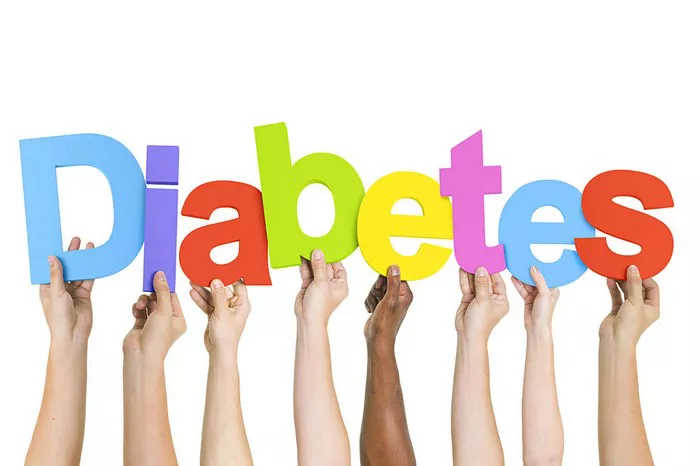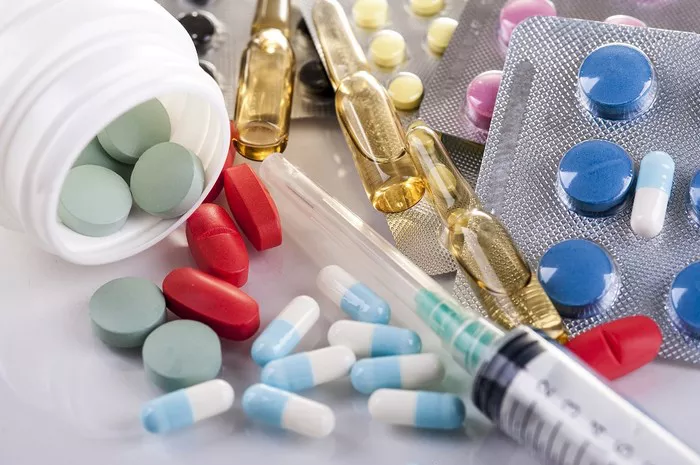Type 1 diabetes (T1D) is an autoimmune condition characterized by the destruction of insulin-producing beta cells in the pancreas, leading to a chronic state of insulin deficiency. Unlike type 2 diabetes, which often develops later in life and is associated with lifestyle factors, type 1 diabetes is typically diagnosed in children and young adults. This article delves into the multifaceted approach to treating type 1 diabetes, focusing on insulin therapy, advancements in technology, lifestyle management, and the promising horizons in research and development.
Insulin Therapy: The Cornerstone of Type 1 Diabetes Management
Insulin therapy remains the cornerstone of type 1 diabetes treatment. Since the discovery of insulin in 1921, it has transformed from a crude extract to highly purified forms and, more recently, to recombinant DNA insulin analogs. Insulin therapy aims to mimic the normal physiological pattern of insulin secretion, which involves basal insulin levels and bolus insulin for postprandial glucose control.
Types of Insulin
Rapid-acting Insulin: Includes analogs like insulin lispro, aspart, and glulisine. These insulins begin working within 10 to 30 minutes, peak at 1 to 2 hours, and last 3 to 5 hours. They are typically administered before meals to manage postprandial blood glucose spikes.
Short-acting Insulin: Regular insulin, which starts working within 30 minutes, peaks at 2 to 3 hours, and lasts 5 to 8 hours. It can be used before meals but has largely been replaced by rapid-acting analogs.
Intermediate-acting Insulin: NPH (Neutral Protamine Hagedorn) insulin, which begins to act in 1 to 3 hours, peaks at 4 to 12 hours, and lasts up to 24 hours. It’s often used in combination with rapid- or short-acting insulins.
Long-acting Insulin: Includes analogs like insulin glargine, detemir, and degludec. These insulins provide a steady basal insulin level over 24 hours or longer, reducing the risk of nocturnal hypoglycemia and offering more flexibility in dosing times.
Insulin Delivery Methods
Syringes and Pens: Traditional methods involving subcutaneous injections. Insulin pens have gained popularity due to their convenience, accurate dosing, and ease of use.
Insulin Pumps: These devices deliver continuous subcutaneous insulin infusion (CSII), providing a basal rate of insulin throughout the day with the option to administer bolus doses for meals and corrections. Pumps offer more precise insulin delivery and flexibility, reducing the frequency of hypoglycemia and improving overall glucose control.
Inhaled Insulin: Recently, inhaled insulin (such as Afrezza) has been introduced as a rapid-acting insulin option. It is administered via an inhaler before meals, providing an alternative to injections for prandial insulin needs.
Implantable Pumps and Closed-loop Systems: Also known as artificial pancreas systems, these advanced devices combine continuous glucose monitoring (CGM) with insulin pumps to automate insulin delivery. They represent a significant advancement in T1D management by maintaining glucose levels within a target range with minimal manual intervention.
Continuous Glucose Monitoring: Revolutionizing Glucose Tracking
Continuous Glucose Monitoring (CGM) systems have revolutionized the management of type 1 diabetes by providing real-time data on glucose levels. Unlike traditional fingerstick tests, CGMs use a sensor placed under the skin to measure interstitial glucose levels continuously. This data is transmitted to a receiver or smartphone, allowing users to monitor trends and make informed decisions about insulin dosing and lifestyle adjustments.
Benefits of CGM
Improved Glycemic Control: CGM systems help users identify patterns and trends in their glucose levels, leading to better management of highs and lows. Studies have shown that CGM use significantly reduces HbA1c levels, a key marker of long-term glucose control.
Reduction in Hypoglycemia: Alarms and alerts for hypo- and hyperglycemia enable timely interventions, reducing the risk of severe hypoglycemic events. This is particularly beneficial for individuals with hypoglycemia unawareness.
Enhanced Quality of Life: The ability to monitor glucose levels without frequent fingersticks enhances the quality of life for people with T1D. The data provided by CGMs also empowers users to make proactive decisions about their diabetes management.
Types of CGM Systems
Real-time CGM (rtCGM): Provides continuous, real-time glucose readings. Examples include Dexcom G6, Medtronic Guardian Connect, and Eversense.
Flash Glucose Monitoring (FGM): Systems like Abbott’s FreeStyle Libre provide continuous data but do not send alerts. Users must scan the sensor with a reader or smartphone to obtain glucose readings.
Lifestyle Management: The Foundation of Comprehensive Care
Effective management of type 1 diabetes extends beyond insulin therapy and technology. A holistic approach encompassing diet, exercise, and mental health is essential for achieving optimal outcomes.
Dietary Considerations
Carbohydrate Counting: This technique involves calculating the grams of carbohydrates in meals to determine the appropriate insulin dose. It provides flexibility in meal choices while maintaining glycemic control.
Glycemic Index (GI): Foods with a low GI release glucose more slowly and steadily, helping to prevent spikes in blood sugar levels. Incorporating low-GI foods into the diet can aid in managing postprandial glucose levels.
Balanced Nutrition: A well-balanced diet rich in vegetables, whole grains, lean proteins, and healthy fats supports overall health and helps maintain stable blood sugar levels. Regular meals and snacks prevent extreme fluctuations in glucose levels.
Physical Activity
Exercise is a crucial component of diabetes management. Regular physical activity improves insulin sensitivity, aids in weight management, and enhances cardiovascular health. However, exercise can have varying effects on blood glucose levels, necessitating careful planning.
Aerobic Exercise: Activities like walking, running, cycling, and swimming improve cardiovascular health and insulin sensitivity. Monitoring blood glucose before, during, and after exercise helps manage its impact on glucose levels.
Resistance Training: Strength training exercises, such as weightlifting, enhance muscle mass and insulin sensitivity. Combining aerobic and resistance exercises provides comprehensive benefits.
Managing Exercise-induced Hypoglycemia: Strategies to prevent hypoglycemia during and after exercise include adjusting insulin doses, consuming carbohydrates before exercise, and using CGM to monitor glucose levels.
Mental Health and Support
Living with type 1 diabetes can be challenging, and managing the emotional aspects is crucial for overall well-being.
Psychological Support: Regular consultations with mental health professionals can help address anxiety, depression, and diabetes-related distress. Support groups and counseling provide a platform for sharing experiences and coping strategies.
Education and Empowerment: Diabetes education programs empower individuals with knowledge about their condition, treatment options, and self-management techniques. Education fosters independence and confidence in managing diabetes.
Advances in Research and Future Directions
The landscape of type 1 diabetes treatment is continually evolving, with promising research and innovations on the horizon.
Immunotherapy and Beta-cell Preservation
Researchers are exploring immunotherapy approaches to halt or reverse the autoimmune process that destroys beta cells in type 1 diabetes.
Immune Modulation: Therapies targeting specific components of the immune system, such as T-cells, aim to prevent the destruction of beta cells. Clinical trials are investigating monoclonal antibodies and other immune modulators.
Beta-cell Regeneration: Research is focused on regenerating beta cells using stem cells or reprogramming other cell types within the pancreas. These approaches hold the potential to restore endogenous insulin production.
Islet Cell Transplantation
Islet cell transplantation involves transplanting insulin-producing islet cells from a donor pancreas into the recipient’s liver. This approach can provide a functional source of insulin, reducing or eliminating the need for exogenous insulin therapy.
Challenges and Advances: The major challenges include immune rejection and the limited availability of donor islets. Advances in immunosuppressive protocols and the development of encapsulated islet cells aim to address these issues.
Artificial Pancreas Systems: Ongoing advancements in closed-loop systems, integrating CGM and insulin pump technologies, aim to create fully automated insulin delivery systems. The goal is to mimic the physiological functions of a healthy pancreas, maintaining optimal glucose levels with minimal user intervention.
Gene Therapy
Gene therapy holds promise for the treatment of type 1 diabetes by targeting the underlying genetic causes or modulating the immune response.
Gene Editing: Techniques like CRISPR-Cas9 are being investigated to correct genetic mutations responsible for autoimmune attacks on beta cells or to enhance beta-cell regeneration.
Viral Vectors: Viral vectors are used to deliver therapeutic genes to target tissues, potentially restoring normal insulin production and immune function.
Technological Innovations
Smart Insulin Pens: These devices track insulin doses and timing, providing data to help optimize insulin therapy. They can also connect to digital health platforms for better management.
Mobile Health Applications: Apps designed for diabetes management offer features such as carbohydrate counting, insulin dose calculators, and integration with CGMs and insulin pumps. These tools enhance self-management and communication with healthcare providers.
Wearable Technology: Devices like smartwatches and fitness trackers can monitor physical activity, heart rate, and sleep patterns, providing valuable data for comprehensive diabetes management.
Personalized Medicine
Personalized medicine aims to tailor treatment plans based on individual characteristics, such as genetic makeup, lifestyle, and response to therapy.
Genetic Profiling: Genetic testing can identify markers associated with type 1 diabetes risk, progression, and response to treatment. This information guides personalized treatment strategies.
Biomarkers: Identifying biomarkers for beta-cell function and immune activity helps monitor disease progression and response to therapies, enabling more targeted interventions.
See also:Do You Know The Symptoms Of Type 1 Diabetes?
Conclusion
The treatment of type 1 diabetes has evolved significantly, from the initial discovery of insulin to the integration of advanced technologies and promising research avenues. Insulin therapy remains the cornerstone, with continuous advancements in delivery methods and formulations enhancing efficacy and convenience. The advent of continuous glucose monitoring and closed-loop systems has revolutionized glucose management, providing real-time data and automated insulin delivery.
A holistic approach encompassing lifestyle management, including diet, exercise, and mental health, is crucial for optimal outcomes. Ongoing research in immunotherapy, beta-cell preservation, islet cell transplantation, gene therapy, and technological innovations holds the promise of transforming the future of type 1 diabetes treatment.
Ultimately, the goal is to achieve a cure for type 1 diabetes, restoring normal insulin production and function. Until then, comprehensive management strategies and cutting-edge advancements continue to improve the lives of those living with this challenging condition. As research progresses and new therapies emerge, the future of type 1 diabetes treatment remains bright, offering hope and better quality of life for millions of individuals worldwide.
Related topics:
If You Have Type 1 Diabetes, What Should Do Now?

























